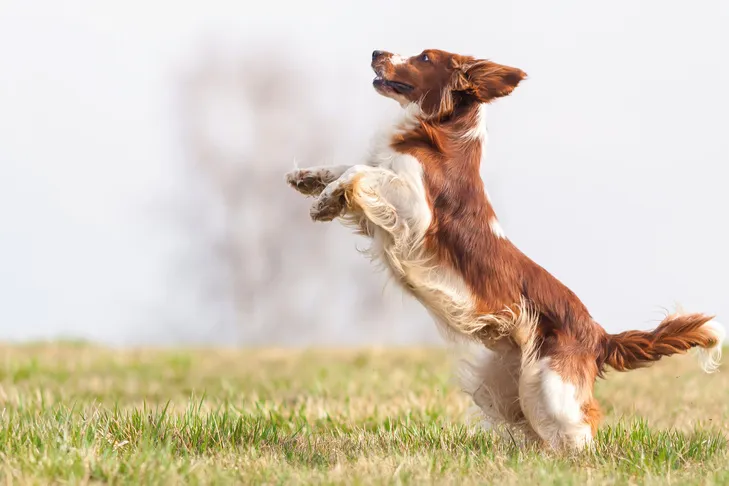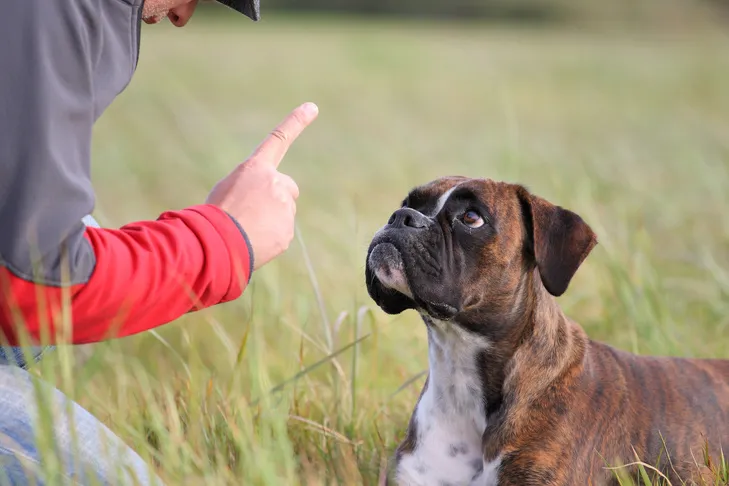Jumping up on people is a remarkably common canine behavior problem, often rooted in a dog’s natural desire to greet us face-to-face and gain attention. While it may seem endearing or harmless, especially from a small breed, it can pose significant risks. Large dogs can easily knock over children or seniors, while even smaller pets can leave muddy paw prints or scratches. Your dog is simply attempting to say “hello” in their own way, and from their perspective, jumping is a highly effective method for capturing your attention. The challenge then becomes: How Do You Get Your Dog To Stop Jumping Up when it’s such an instinctual behavior?
The key lies in teaching your dog an alternative, more polite greeting rule, such as “keep your front paws on the floor.” This approach is not only safer but also provides your pet with a clear and acceptable way to welcome you home and earn your affection. By guiding them toward appropriate behavior, you empower them to understand exactly how to interact respectfully with humans. If you’re wondering how to stop a dog howling when you go out, remember that consistent training is crucial for all unwanted behaviors, including jumping. The following 10 tips offer a comprehensive guide to teaching your dog appropriate greeting etiquette.
1. Only Reward When All Four Paws Are on the Floor
The most effective strategy for modifying problem behavior is to teach your dog an incompatible alternative. Dogs learn more quickly when you clearly show them what to do, rather than just what not to do. For jumping, this means establishing a rule where all four paws must remain on the floor. A dog cannot jump and stand simultaneously. You might also choose to teach them to sit or lie down for greetings. Whatever rule you implement, it is paramount that you only offer greetings and attention when your dog is adhering to it. Consistency is vital: never permit jumping in one context (e.g., when you’re wearing casual clothes) but forbid it in another (e.g., when dressed up).
2. Provide Immediate Attention When Your Dog’s Feet Are Grounded
Dogs naturally repeat behaviors that lead to desired outcomes. Therefore, as soon as your dog follows your greeting rule – like keeping all front feet on the floor – you must immediately provide positive reinforcement in the form of praise and petting. Your attention is a powerful reward for your dog, so ensure they receive it without delay when they exhibit the correct behavior, especially during the learning phase. Avoid postponing your greeting to remove your coat or shoes, as your dog might grow impatient and resort to jumping to get noticed.
3. Withdraw Attention When Your Dog Jumps Up
Conversely, to eliminate jumping, you must stop rewarding it entirely. Never reinforce a behavior you wish to extinguish. If your dog jumps on you, promptly remove the attention they seek. This can be as simple as turning your back or calmly walking away, demonstrating that jumping achieves the opposite of their intention. The moment your dog returns to “four on the floor,” turn back and quietly offer praise and petting. This consistent feedback helps your dog understand that their behavior acts as a switch, turning your attention on and off.
 Welsh Springer Spaniel jumping up outdoors.
Welsh Springer Spaniel jumping up outdoors.
4. Set Your Dog Up for Success with Clear Instructions
While ignoring jumping and rewarding proper greetings is effective, it can be a trial-and-error process that might frustrate your dog. You can accelerate learning by making it easier for them to follow your greeting rule. If your rule is for them to sit, ask them to sit as soon as you enter the door. If “four on the floor” is your requirement, encourage them to maintain that stance.
An excellent tactic to prevent jumping is to scatter treats on the floor. Most dogs find free goodies irresistible, and they cannot jump while sniffing for treats on the ground. You need to be quick; if you provide food before your dog even considers jumping, you can reward their “four on the floor” behavior with both attention and delicious treats. Your dog will quickly grasp the new greeting rule, and you can gradually reduce the reliance on food rewards over time.
5. Consistently Reward Proper Greeting Behavior
Your dog will learn appropriate greeting behavior much faster if their actions consistently and immediately affect your attention. When their front feet are on the floor, they gain your attention; when they jump, your attention is withdrawn. This means you must always reward your dog when they follow your greeting rule. Even if you’ve just endured five minutes of persistent jumping and are feeling annoyed, never withhold your attention once your dog’s feet are on the ground. Inconsistent reinforcement will only confuse your dog and slow down the learning process.
6. Avoid Physical Reprimands Like Grabbing or Pushing
Remember that your dog is jumping to get your attention, and even a seemingly negative physical response—such as grabbing their collar, holding their paws, or pushing them away—still constitutes attention. This means you are inadvertently rewarding the jumping behavior. Instead of reducing its frequency, physical intervention can actually lead to more jumping in the long run. Furthermore, for many dogs, physical interaction can be misinterpreted as an invitation to roughhouse play, causing them to return with more intensity, believing it’s all part of a fun game. This also applies if you are looking to train puppy for emotional support; gentle methods are always best.
 American Hairless Terrier jumping up on the leg of its owner outdoors.
American Hairless Terrier jumping up on the leg of its owner outdoors.
7. Do Not Use Your Knee to Block Your Dog
You might have heard the advice to raise your knee to block your dog’s chest when they jump as a deterrent. However, as previously discussed, this physical action can be misconstrued as attention or a wrestling game by some dogs, potentially intensifying the jumping. More importantly, for the majority of dogs, this method can erode trust and damage the human-canine bond. Your dog is merely trying to say “hello,” and responding with physical punishment can be confusing and even harmful. This approach could lead to other behavioral issues, such as a dog not coming when called, as they may become distrustful of your reactions.
8. Maintain Low-Key Greetings During the Learning Phase
Because your dog is often overwhelmingly happy to see you, controlling their excitement can be challenging. It requires a significant amount of emotional self-control to resist the natural impulse to jump and instead adhere to a new greeting rule. You can make this easier for your dog by keeping your own greetings low-key. Dogs are adept at reading our emotions; if you are overly excited, they will mirror that energy. Instead, strive to remain calm and quiet, even when offering praise. As your dog begins to grasp the new behavior, you can gradually increase your enthusiasm until you can match their excitement without triggering unwanted jumping. If you’re interested in canine behavior training near me, many trainers emphasize the importance of calm interactions.
9. Prevent Your Dog From Jumping on Guests
It’s not just you who can reinforce your dog’s jumping behavior. Other family members, guests, and even strangers encountered on walks can inadvertently reward jumping if you’re not vigilant. To prevent this, employ management techniques such as keeping your dog on a leash so they cannot approach visitors freely. An even better strategy is to send your dog to their designated “place,” such as a mat or bed, or put them in their crate so they are not near the door when guests arrive. Utilizing a baby gate to block the front hall can also be an effective barrier.
 Boxer laying down outdoors being trained by a man.
Boxer laying down outdoors being trained by a man.
10. Instruct Guests and Strangers on Your Greeting Rules
Don’t hesitate to clearly communicate your dog’s greeting rules to guests and strangers before they interact. While your dog is still learning, ask people to completely ignore your dog unless you explicitly say it’s okay to engage. It’s also wise to avoid interactions with unfamiliar people until your dog has mastered appropriate greetings with friends and family who you know will cooperate with your training methods. Instead, use a “watch me” cue or distract your dog with a hand touch or a favorite toy until the stranger has passed. Understanding how to train my dog as a therapy dog also involves extensive training in calm greetings. For those whose pet seems to have other issues like “my dog won’t stop scratching,” these underlying problems can sometimes exacerbate general behavioral challenges.
Learning how to get your dog to stop jumping up requires patience, consistency, and a clear understanding of canine behavior. By consistently reinforcing desired behaviors and removing rewards for unwanted actions, you can effectively teach your dog to greet people politely. Remember that your attention is a powerful tool; use it wisely to shape your dog’s interactions. With dedication, your dog will learn to control their excitement and offer a calm, four-paws-on-the-floor greeting every time.
